GALPHIMIA
Galphimia
Cav., Icon. 5: 61. 1799; C. Anderson, Revision of Galphimia (Malpighiaceae). Contr. Univ. Michigan Herb. 25: 1-82. 2007.
Shrubs, sub shrubs or small trees. Leaves usually bearing glands on petiole and / or proximally on margin of lamina; stipules intrapetiolar, free, persistent on stem. Inflorescence terminal, erect, a pseudoraceme of single flowers (1-flowered cincinni); pseudoracemes single or several grouped in a panicle; peduncle well-developed, very short or absent; bracteoles eglandular, long-persistent, mostly borne below apex of peduncle when peduncle well developed. Flowers bisexual, actinomorphic or slightly zygomorphic, 5-merous, hypogynous, usually yellow. Sepals 5, oblong to elliptic, distally denticulate or minutely erose, sometimes ciliate; sepals with glands present at the base of sinus between adjacent ones or glands absent. Petals 5, free, clawed; four lateral petals equal, one posterior petal (flag petal) with a longer and stouter claw and differently shaped limb; species lacking peduncle have all subequal petals; bright yellow, often suffused with red or turning red in age, glabrous or sparsely hairy on abaxial midrib; minutely denticulate or slightly erose. Stamens 10, glabrous; filaments free or connate at base, mostly longer opposite sepals than opposite petals; anthers subequal. Carpels 3, syncarpous; ovary radially symmetrical, 3-locular, 1 ovule per loculus; styles 3, slender and subulate with minute stigmas. Fruit a schizocarp breaking into 3 cocci; cocci 3-5 mm long, pebble-like each containing one globose seed with a dark brown smooth seed coat; cocci leave little or no raised torus, +/- smooth except for a narrow dorsal keel.
26 species
Galphimia gracilis
Galphimia gracilis
Bartl., Linnaea 13: 552. 1840; Anderson, Contr. Univ. Michigan Herb. 25: 1-82. 2007.
Evergreen perennial shrub to subshrubs up to 4 m tall, branched, strigose to tomentulose, becoming glabrate to glabrous on maturity; all vegetative parts covered with reddish brown hairs, 0.3-0.6 mm long, subsessile or with persistent tubercles at base (0.05 mm), tubercles large on petioles. Leaves opposite, petiolate, petiole 1-1.4 cm, pinkish purple, lamina 3.8-4 cm x 1.5-2.0 cm, ovate, lanceolate, elliptic, light green, acute, entire, base cuneate; glands usually a pair borne on the margin of lamina 2-10 mm above the base or sometimes with 3-4 glands, each gland 0.3-0.4 mm in diameter, disc- like and prominent or flush with the margin or sometimes peg-like and ca. 0.1 mm long; stipules 1.3-3.2 mm x 0.4-0.7 mm, linear with scattered hairs at the apex along the margin. Inflorescence terminal raceme, the axes strigose or tomentulose; peduncle equal to or half the pedicel length; bracts 2.5-3 mm x 0.6-0.8 mm, subopposite; bracts and bracteoles glabrous or with marginal scattered hairs. Flowers bisexual, slightly zygomorphic, 5-merous, hypogynous, usually yellow Sepals 5, free, 2.5-3.2 mm x 1.2-1.5 mm, elliptical or oblong, margin denticulate-erose in distal half, glabrous; glands absent. Petals 5, free, valvate, deciduous, margin erose to irregularly denticulate and with scattered fimbriae; 4 lateral petals: claw 2-2.5 mm x 0.5-0.7 mm, limb 6-7 (-8.5) mm x 4-4.6 (-5) mm, narrowly elliptical to narrowly ovate, apex obtuse, base acute; posterior petal: claw 4-5 mm x 1-1.5 mm, limb 7-8.5 x 6-7(-8) mm, broadly triangular, apex broadly obtuse, base truncate. Stamens 10, glabrous; filaments slightly connate at base; filaments opposite the sepals are longer (3.5-5 mm) than opposite the petals (2-3 to 4 mm); glabrous; anthers unequal, 2.3-3 mm long, basifixed, dehiscence by terminal pores. Carpels 3, syncarpous; ovary radially symmetrical, trilobed, 3-locular, 1 ovule per loculus; styles 3, slender and subulate with minute stigmas. Fruit a schizocarp breaking into 3 cocci; cocci pebble-shaped, 4.5-5 mm x 3-3.3 mm; smooth to rugrose, glabrous. Seeds globose with dark brown smooth seed coat.
Common Names: Canary Bush, Gold Shower, Golden Thyrallis, Thriallis, Rain of Gold, Spray of Gold
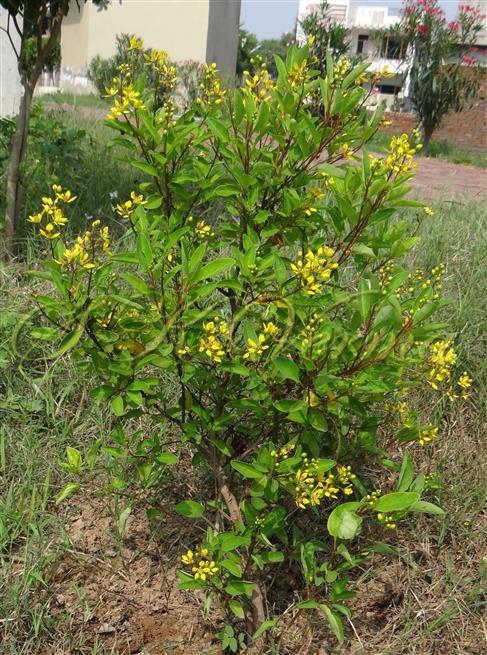
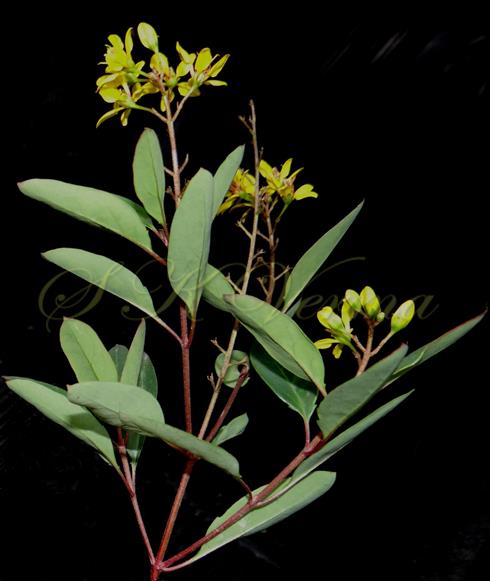
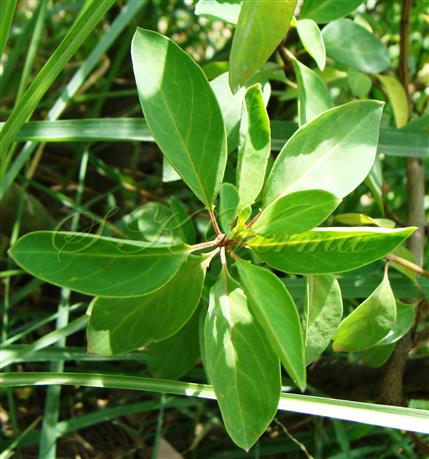
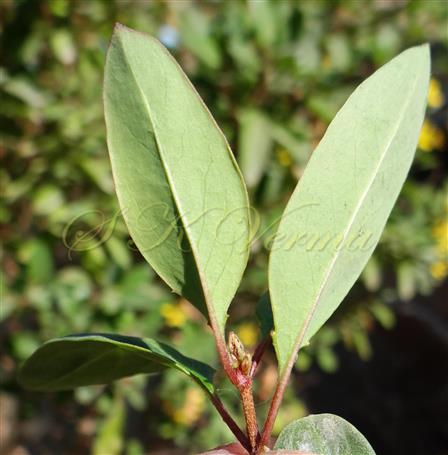
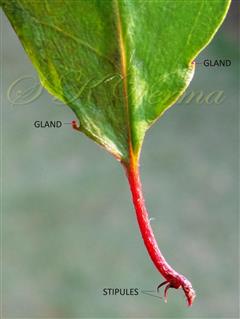
-DSC06627.jpg)
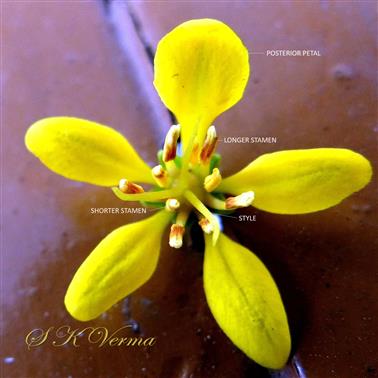
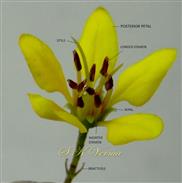
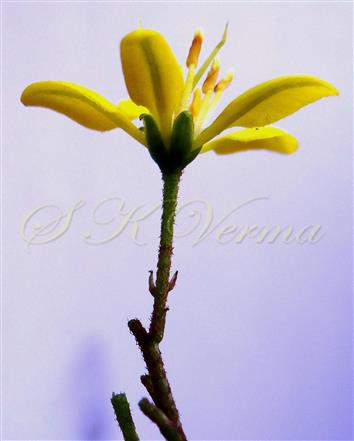
-Filaments of stamens opp. sepals longer-DSC06303.jpg)
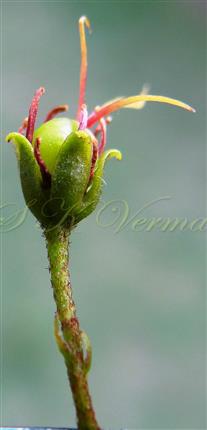
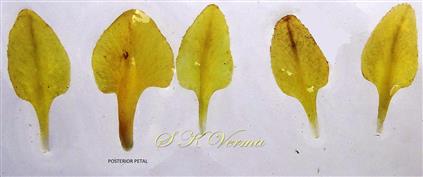

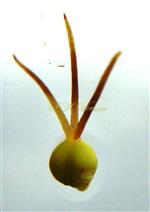
-DSC09068.jpg)
-DSC09072.jpg)






-DSC06627.jpg)



-Filaments of stamens opp. sepals longer-DSC06303.jpg)


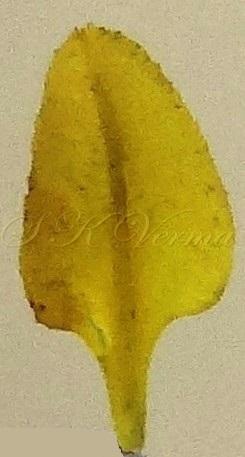

-DSC09068.jpg)
-DSC09072.jpg)